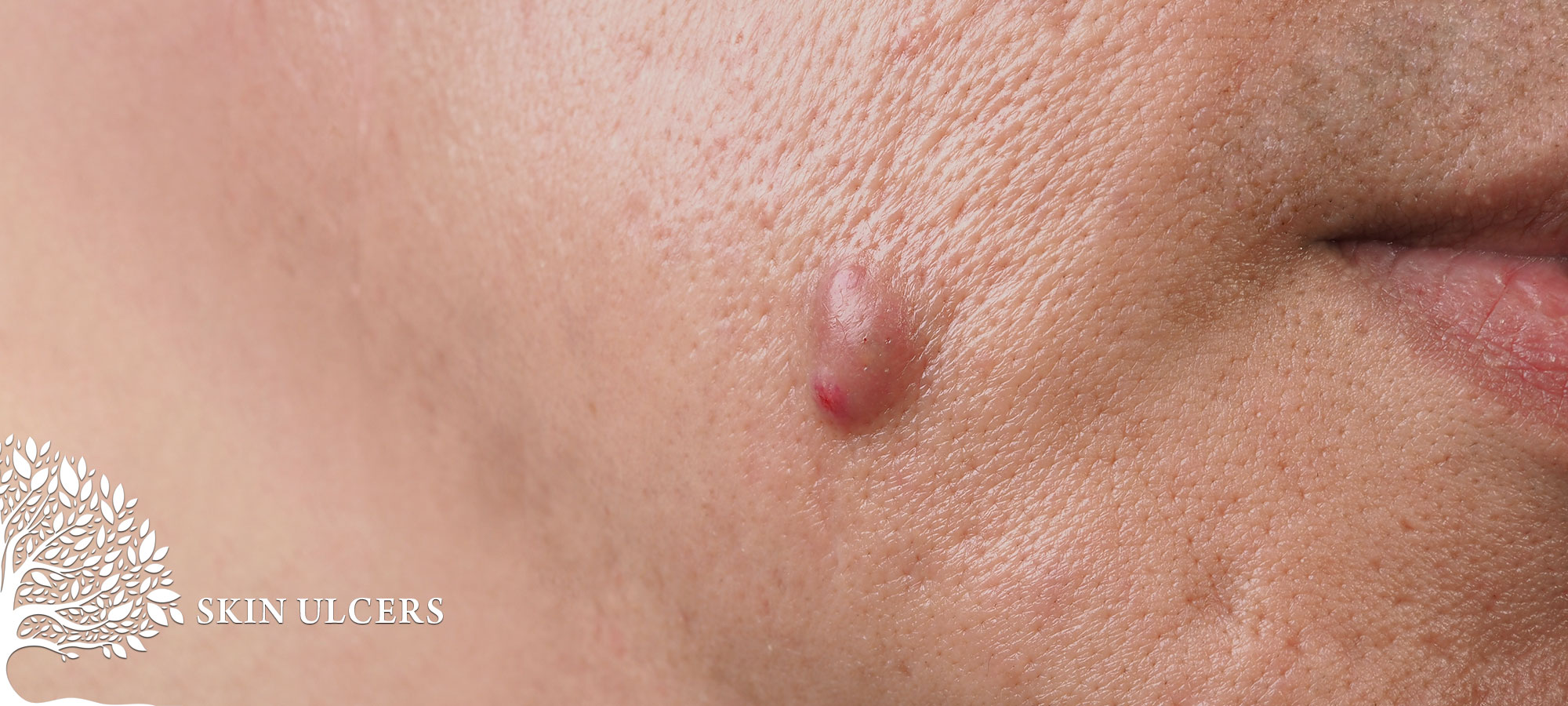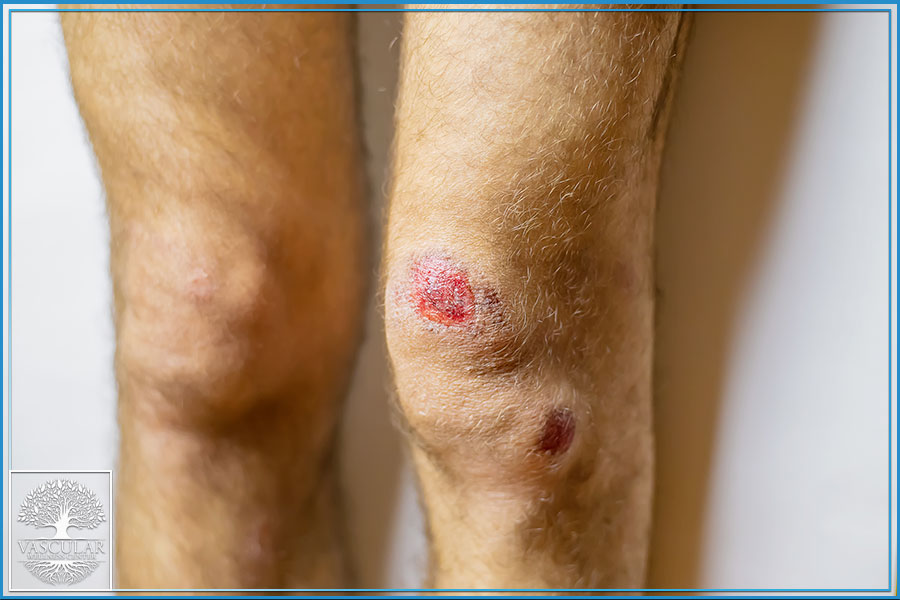
Skin Ulcers
Also referred to as venous ulcerations, venous ulcers, venous stasis ulcers, leg ulcers, or postphlebitic ulcers, skin ulcers are open sores typically appearing on the lower legs or ankles. They commonly stem from venous insufficiency, which impairs blood flow and increases pressure in the veins of the legs.
Progression & Prognosis
If left untreated, skin ulcers can deteriorate and lead to complications such as infection, cellulitis, or, in extreme cases, gangrene. Although targeted interventions can help with healing and recurrence prevention, recovery often takes time and may require ongoing monitoring and care.

Risk Factors & Symptoms of Skin Ulcers
Risk Factors & Underlying Conditions
- Venous insufficiency – Valve damage in the leg veins, resulting in poor circulation and elevated venous pressure
- Deep vein thrombosis (DVT) – Blood clots that disrupt blood flow in the deep leg veins
- Obesity – Excess weight placing additional strain on leg veins
- History of leg injury/trauma – Injuries can damage veins and compromise circulation
- Age – Veins can become less elastic and functional over time, raising the likelihood of ulcers
Symptoms:
- Discoloration in feet and legs
- Darkened skin near the ankles
- Swelling in feet and ankles
- Leathery, flaky, or itchy skin
- Leg cramps, heaviness, or tiredness
- Persistent leg aching or pain
- Retention of fluid
- Slow-healing wounds on the legs or feet
- Bulging varicose veins
- Warmth or redness in the legs
- Pain that worsens after long periods of standing
Treatments for Skin Ulcers
Lifestyle Changes
A healthy weight, leg elevation when possible, and avoiding prolonged standing or sitting can help reduce recurrence and improve overall vein health.
Endovenous Laser Therapy (EVLT)
An outpatient procedure that uses laser-generated heat to treat varicose veins and related issues. After locating the damaged vein through ultrasound, a laser is applied to seal it off. Done under local anesthesia with just a small needle puncture, it typically takes 20–45 minutes.
Radiofrequency Ablation (RFA)
A minimally invasive alternative to traditional vein stripping, RFA delivers heat through a thin catheter inserted under ultrasound guidance. A saline-lidocaine mixture is used to reduce discomfort, and the treatment typically lasts only 10–15 minutes, allowing most patients to resume normal activities by the next day.
Superficial Vein Removal
Over time, superficial veins can become thick and rope-like, often with darkened skin above them due to increased pressure and chronic inflammation.
High Ligation
In this surgical option, a damaged vein is tied off to reroute blood flow, and vein stripping removes the affected vein. Although less common than newer, minimally invasive techniques, it can be performed as an outpatient procedure under general anesthesia, with high success rates in specific cases.
Compression Stockings
These stockings improve circulation in the lower extremities effectively and affordably. Worn daily, they alleviate symptoms, encourage healthy blood flow, and help reduce the risk of blood clots. They can be used short-term, long-term, or for postoperative recovery.
Other Treatments Include
- Varithena
- Sclerotherapy
- Iliac Vein Stenting
- Intravascular Ultrasound (IVUS)
- Venogram
- Venoplasty
- Venous Thrombectomy for DVT
- Venclose
- Phlebectomy
- Endovenous Ablation
